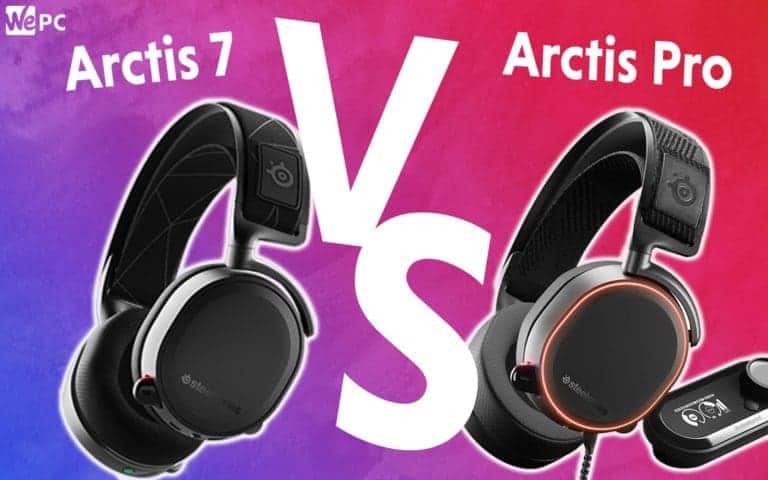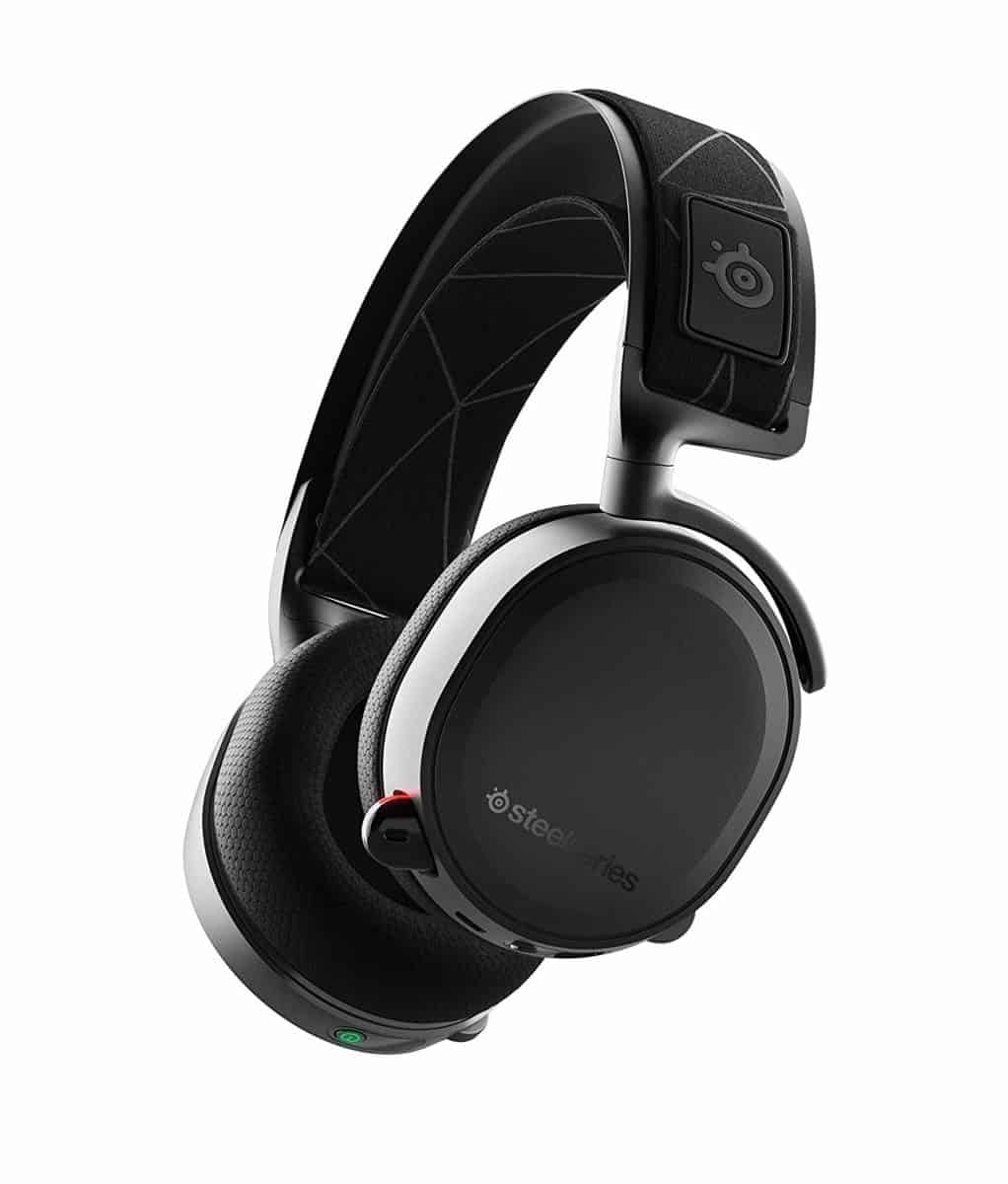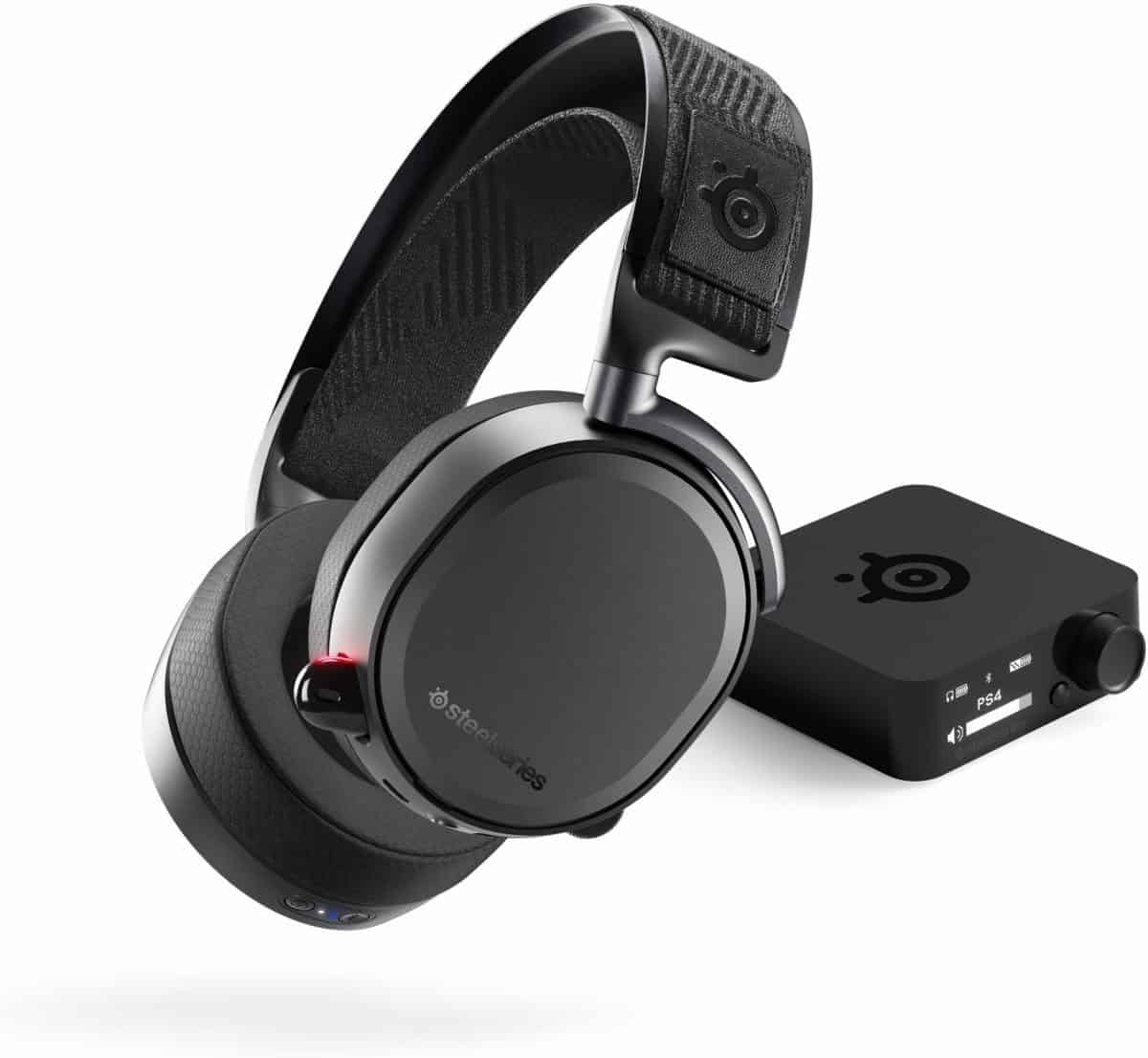Arctis 7 vs Arctis Pro
This article compares the Acrtis 7 and Arctis Pro gaming headphones in key categories in order to see which one comes out on top.

A decent pair of gaming headphones is a must this day and age, and a company making some serious sonic waves right now is SteelSeries, but which of their two top-tier headphone designs is best? We put the Arctis 7 and the Arctis Pro through their paces in a head-to-head comparison to help you decide.
Frequency Response and Sound Quality
The frequency response of audio playback equipment is essentially the gamut of pitches the speakers can emit before audio quality begins to suffer. Humans can receive frequencies between 20Hz and 20,000Hz.
The Arctis Pros are loaded with state-of-the-art speaker drivers that utilize neodymium magnets to deliver high-res audio between 10Hz and 40,000Hz with a 102dB volume sensitivity. High-res audio refers to a certain threshold of bit-audio depth and sample rate. Generally speaking, it increases audio clarity.
The Arctis 7s have a similar yet rudimentary set of the same neodymium drivers and can push out pitches between 20 and 20,000Hz with a volume sensitivity of 98dB and harmonic distortion rate less than 3%.
You’re probably asking yourself why you’d need headphones with speakers that push roughly 20,000Hz beyond and 10Hz below the human audio spectrum, but the sheer articulation of the headphones really isn’t important, it’s the implications it has for general sound quality. Being that the Pro headphones have such a wide frequency response, it means that pitches in the audible range simply aren’t a challenge, leading to pristine, high-fidelity playback and a harmonic distortion level of less than 1%.
MIC
Despite the vast improvements made to the Pro’s speaker drivers, it has roundabout the exact same microphone as the Arctis 7s. They both feature noise-canceling bidirectional patterns with a frequency response between 100 and 10,000Hz, and -38dBA volume sensitivity.
This refresh of the same mic is a little disappointing, as it would be nice to see improvements to functionality as a whole to ensure you’re getting the best bang for your buck. Having said that, it’s less laziness on SteelSeries’ part as it is an ‘if it ain’t broke don’t fix it’ situation.
Their mics are already vastly improved upon most other companies’ supposedly noise-canceling omnidirectional designs. Noise cancelation isn’t really a separate feature you can augment an omni-mic with. True noise cancellation is built into the pattern of the mic, which is why SteelSeries’ bidirectional approach is much more effective.
Battery
The batteries used for the Arctis 7 were already highly impressive, offering 24 hours of constant use on a single charge, and you can’t really ask for more than that, nor would it be healthy to game any longer without a break. In light of this, Steel Series hasn’t made any performative changes to the battery, but what they have done is improve on practicality.
With a set of Arctis Pro headphones, the battery is fully removable, making charging a little easier, and allowing you to replace them if they break or begin to fade over time.
Controls and I/O
In terms of controls, these are very similar designs. They both feature easy-to-locate large mute buttons on the left ear cup, followed by a volume wheel, the main cable jack, and finally a headphone share jack.
Where these controls diverge is the chat/mix dial. On the 7s, this dial is built into the right earcup along with the USB charging port and power button. The chat/mix dial on the Pros is situated on a separate module.
The I/O array on the Pro is slightly dissimilar to that of the 7 simply because of the removable battery, so you won’t find a USB charging port directly on the ear cup.
Materials, Design, and Comfort
The fabric used on the ear cushions of both of these headphones is known as Airweave. It’s incredibly soft but firm, and it’s highly breathable too. Wearing either pair of headphones for long periods of time shouldn’t prove a problem. The inside of ear cups themselves have a relatively deep depression that prevents ear contact, eliminating fatigue, and the ski-goggle fabric headband is easily adjusted and incredibly comfortable.
The solid part of the headbands is crafted from lightweight steel and aluminum alloys and lateral plastic joints. We’d prefer full-metal construction, but it doesn’t really seem to affect overall durability.
The swivel joints on the Arctis 7 may be a little loose for some, but they don’t exhibit any of the dreaded creaking or squeaking noises present in some headphones. The Pros fit a little tighter, but not necessarily in an uncomfortable way.
RGB and Software
The Arctis Pro absolutely storms this round. With an LED-laced outer ear cup and illuminated microphone, the Pros have arrived at an intersection between RGB brilliance and tasteful glow. It’s not overbearing, nor is it too subtle, and you can customize the color and sequence or even sync them up with other Prism RGB accessories via the SteelSeries software. Unfortunately, the only light on the Arctis 7 is the power button that changes color to illustrate battery life.
Besides the RGB adjustable options, the software for both of these headphones is the same, and we’re happy to say, is expertly designed. It offers immediate clarity, giving you intuitive options for fine-tuning your levels, choosing different audio modes, and a test function, so you can get everything perfect before you even start a game.
GameDAC
One of the most exciting things about the Pro line of headphones is the GameDAC option. GameDAC, a digital-to-analog converter, enables super high-resolution 96KHz, 24-but audio reproduction, boosting general clarity and precision locational audio. You can purchase the Pro with or without GameDAC. Apart from the wires being a little short, it’s a fantastic addition that will put a smile on any audiophile’s face.
Unfortunately, GameDAC is exclusive to the Pro series, so if you like the sound of it, you’ll have to fork out the extra bills.
Verdict
The Arctis Pro headphones are an expensive set of cans, but professional-grade audio equipment always is. Take headphones designed for use in professional music studios for example; you’d be looking at doubling or tripling the cost of the Pros and that’s minus the RGBs, the software, the microphone, and the ergonomic controls. So, comparatively speaking, the Pros are actually quite good value for money.
They’re also much better than the 7s. For games where locational audio is essential such as COD Modern Warfare, the Arctis Pros are going to up your performance…it’s as simple as that. So articulated is the sound profile that you’ll hear footsteps behind you through the rumble of grenades and rattle of gunfire. It’s like having superpowers.
Are the Arctis 7s enough for most gamers? Yes, they have DTX X 2.0 surround sound, the same construction and mic, and decent frequency response. They’re perfectly functional, great even. If you’re not much of an audiophile, it makes more sense to choose the 7s and save some money. However, if you’re passionate about immersive sensory experiences, the Pros are well worth the price tag.




